Reviewing D&D Monsters - 5E Monster Manual, Dryads to Flumphs
Written on: 10月 18, 2019
Reviewing D&D Monsters - 5E Monster Manual, Dryads to Flumphs - Hi friends, I hope you are all in good healthkanakoroku, In the article you are reading this time with the title Reviewing D&D Monsters - 5E Monster Manual, Dryads to Flumphs, We have prepared this article well for you to read and take information in it. hopefully the contents of the post
Artikel Dungeons & Dragons,
Artikel Game,
Artikel Reviewing Monsters, what we write you can understand. ok, happy reading.
Title : Reviewing D&D Monsters - 5E Monster Manual, Dryads to Flumphs
link : Reviewing D&D Monsters - 5E Monster Manual, Dryads to Flumphs
Click here for the previous part, covering Dragons to Driders.
Click here for the next part, covering Fomorians to Gnolls.
Click here for the index.
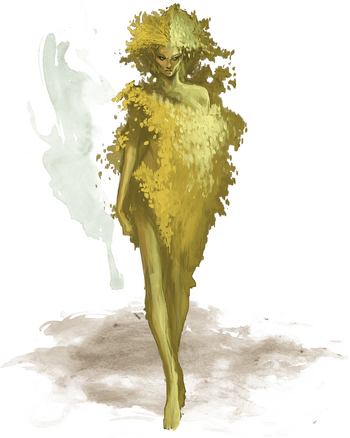
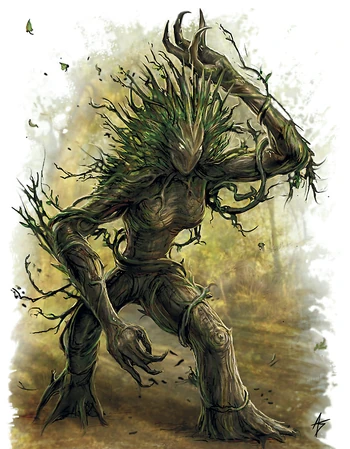
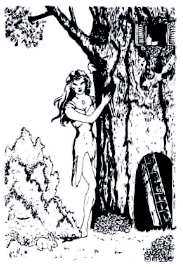
Dryad
Another monster taken from Greek mythology is the dryad, who are fairies that take the form of feminine figures that dart in and out of trees, and are completely neutral, not evil, but not technically 'good' in the way we silly humanoids understand it. According to 5E lore, though, dryads are apparently specifically fey that are cursed and bound to a single tree for punishment because they fell in love with mortals. The dryad is thus bound to the tree, able to move in and out of the tree freely and tend to the forest around her (they can teleport to other trees, but they're still bound to a specific one). It's really interesting, because the dryad's fate, youth and sanity are all bound to a tree, which is a neat little gimmick. They're not exactly harmful, they just are really inquisitive and curious. It's just that being a fey lady, dryads tend to not understand human culture and sometimes do things like, well, abduct and/or magically charm people away. And they'll straight-up be hostile against people that attack their patch of forest. Depending on the edition, when you cut a dryad's special tree, they'll instantly die or be driven insane.
While throughout other D&D editions dryads have been fairy ladies with a plant theme, 4th Edition reinvents the Dryad as this horrifying, large humanoid tree monster with no mouth, a body made out of wood, and bramble-hair. Which is pretty impressive artwork (my D&D group uses the 4E Dryad as a substitute for stronger Blight variants), but not every single monster needed to look creepy and non-conventionally-humanoid, y'know? Never been the biggest fan of nature spirits and whatnot, but there's a place in D&D worlds for both happy, inquisitive forest spirits like the classic dryad, as well as the myriad other murderous nature spirits that exist in the D&D world. I like these.
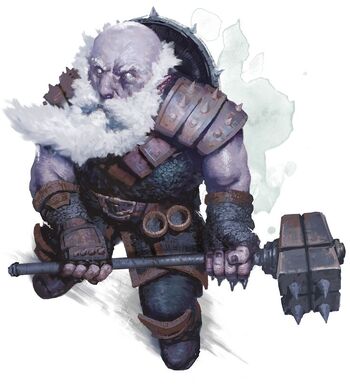
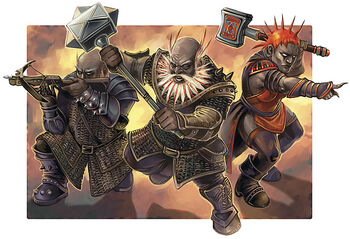
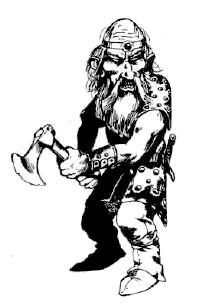
Duergar
These guys are basically evil dwarves, living in the Underdark, the subterranean network of dark caves deep underneath the earth, and they're kind of assholes! They're what the Dark Iron Dwarves in Warcraft are based off of, and they're basically gray-skinned dwarves that are lawful evil, warlike, and wanting to expand and conquer as many areas as they can. Later editions codified their backstory, telling us that they used to be regular old dwarves who dug too deep, and ended up being captured by the Mind Flayers (more on those later!) and basically became slaves for generations until they won their victory and rebelled against their captors with the aid of the evil, xenophobic god Laduguer (which may or may not be a devil in disguise). Both the god's influence and their slavery has basically changed the race, not just visually, but also caused them all to become evil, untrusting and dour. They're basically depressed, constantly-warring dwarves, and are particularly fond of enslaving other races. Physically, in addition to their visual changes, they're also resistant to the tricks Mind Flayers can use, as well as having an innate ability to enlarge their bodies temporarily or to turn invisible at will, which are apparently caused by their imprisonment.
Taken as a simple "evil dwarf" race, they're... they're honestly pretty simple. A neat backstory, a couple of extra visual cues... they're all right enemy concepts, though. It's not like the dwarves are super-duper interesting in the first place, and depending on your GM's ability and your campaign's storyline, a society of evil dwarves might actually be pretty neat-o set of enemies.
ELEMENTALS:
One of D&D's biggest contributions to fantasy video-gaming is perhaps the Elementals. While dragons, demons and Greek-inspired monsters all draw from traditional myths to some degree, the Elementals were a bit more... original. And the concept really is simple. You fight living fire. And living water. And living rock. And living wind. But the fact that these are tied to the cosmology of the setting (which depends on the edition, but still) and the fact that these are quite literally the embodiment of the actual building blocks of the universe is certainly pretty cool. They've since shown up in so many other video games and fantasy settings, tending to use the simple "hunched over man made up of a given element". They function somewhat similarly to other extra-planar creatures like dragons and demons and fey, but are far, far more primal, not really being super-sentient, and are as primal as the elements they represent. There are a bunch of other 'greater' elemental beings that have evil evil plans, but most regular elementals are basically just unfocused neutral monsters.
Elementals are also often brought into the mortal plane with magical items or spells, but the elementals just instinctively refuse to do so. In other editions, we also have para-elementals, quasi-elementals, fused elementals, and whatnot, since the mythology and cosmology of the worlds change all the time... but for the most part, the four basic elementals are, as Avatar: The Last Airbender has taught us: fire, water, earth and air. Not going to say that much here, they're pretty neat, basic monsters, and while there are a lot of lore behind them, I do appreciate the relative simplicity of these things.
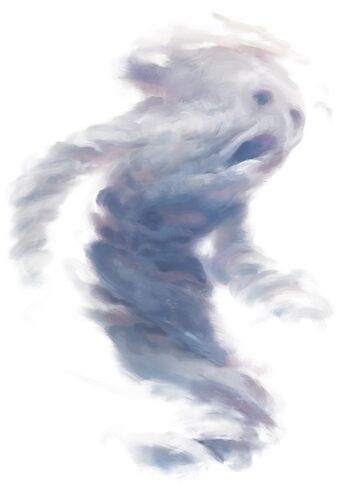
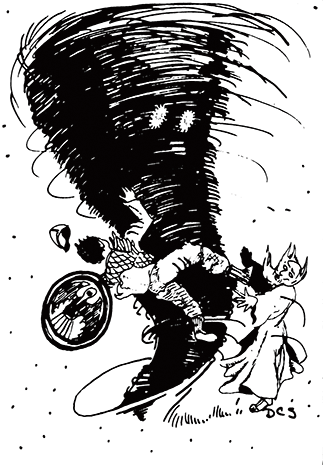
Air Elemental
Look at that hilarious 1st edition air elemental, which literally is just a tornado with googly eyes! 5E's Air Elemental is more like a wispy ghost made out of steam and smoke, and while air elementals tended to look the least impressive compared to water, earth and especially fire... man, fighting against what's literally a living, angry tornado isn't anything to joke about! It's able to fly, which is its biggest advantage, in addition to being made up of air, which means they can go basically wherever they want to.
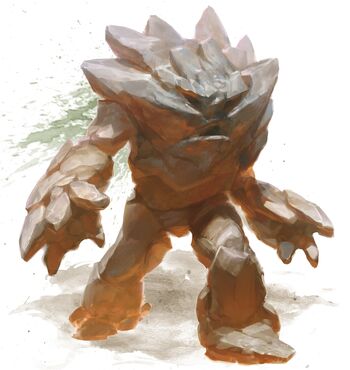
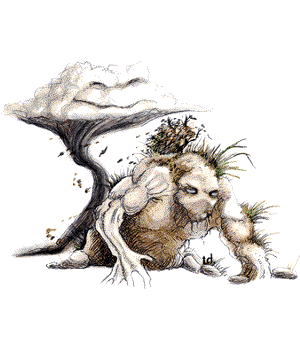
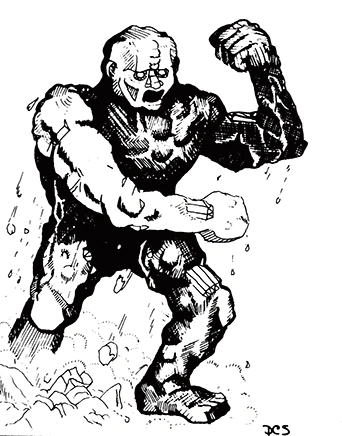
Earth Elemental
Earth elementals are, well, giant rock-people. I'm not the biggest fan of D&D's earth elementals, which tend to sort of blur the lines with things like golems and whatnot, just being huge rock-men. I dunno -- I guess I just really like Warcraft's Earth Elemental design too much? They're pretty neat, and are perhaps the most simple of the elementals. They're giant rock-things that smash you with their rock arms. But then their ability to basically 'melt' into the ground and basically effortlessly glide through the earth itself ends up being an ability that these creatures happily abuse to gain an advantage in battle.
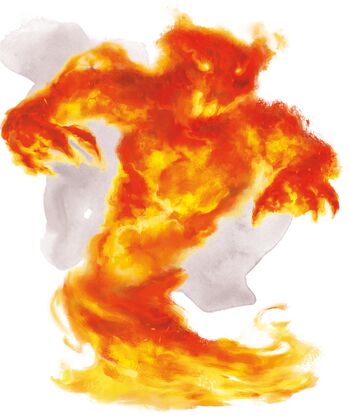
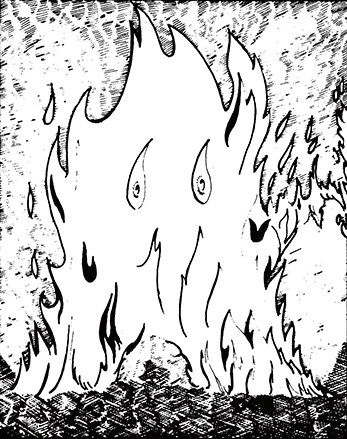
Fire Elemental
Hahaha, the original Fire Elemental was literally just a wildfire with two little candle-flame eyes! All subsequent depictions have basically gone for the burning-tornado-of-flames with a face and two arms look, although 4th Edition swapped out the face for a massive venus flytrap mouth. Fire's probably the most primal and scary of the elementals, because... well, partly because of Avatar, but partly because as living creatures we're just sort of predisposed to be afraid of fire.
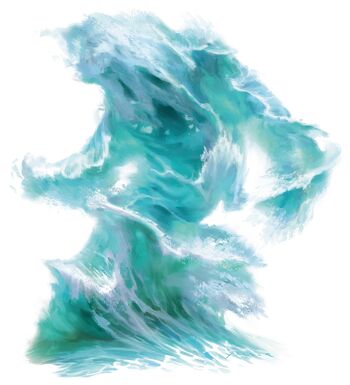
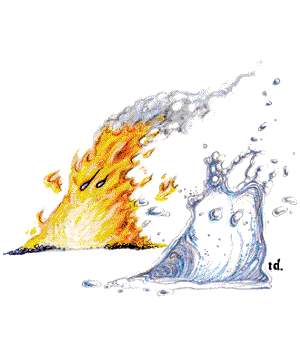
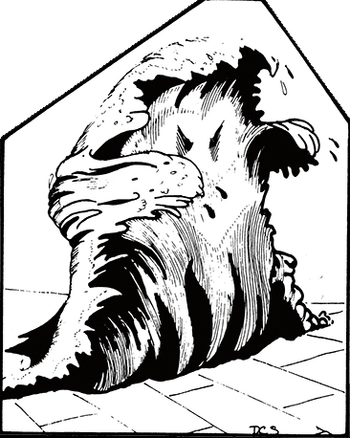
Water Elemental
God, the 1st edition elementals look goofy as hell, look at that thing! It's just a wave with eyes and adorable little punching-boxing nubs for hands. Admittedly, I'm way too used over multiple years of playing Warcraft that the Water Elemental in my head looks like this, but really, it makes a lot more sense for a creature that embodies the element of water to be a whirling mass of waves, yeah? The 5E Water Elemental is a bit more wraith-like of sorts, with a moaning mouth and less prominent arms. The Water Elemental is another tricky creature to fight, with its modus operandi smothering and drowning people.
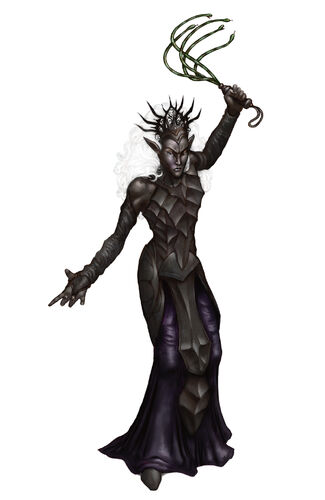
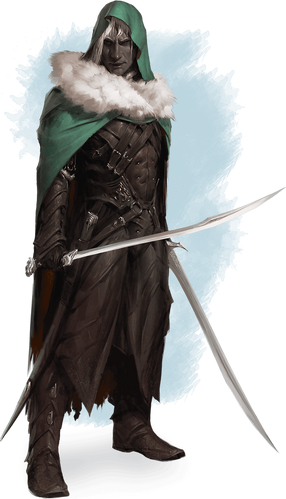
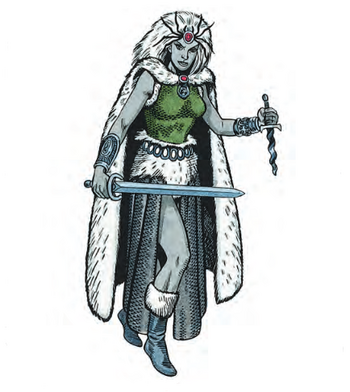
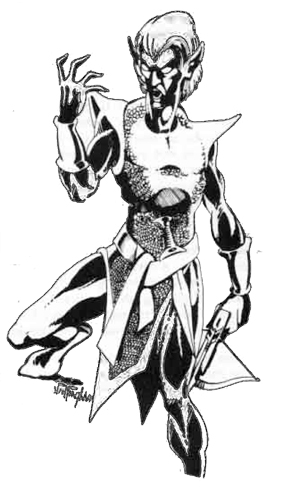
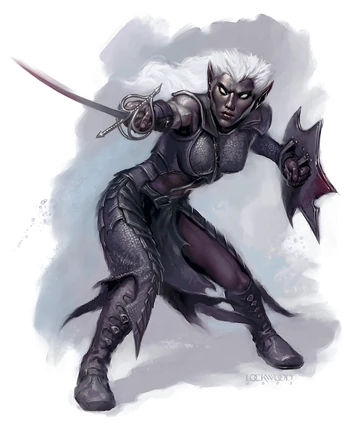 Drow
Drow
The iconic 'evil but humanoid' race from Dungeons & Dragons are the Drow, otherwise known as "Dark Elves", which is every D&D player's go-to race for dark-and-misunderstood sexy-and-attractive player characters prior to the introduction of the Tieflings. The Tieflings actually tend to be misunderstood, and the whole race and culture lean more towards good and neutral, whereas the Drow are supposed to be mainly evil with the heroic ones being more of an exception. Of course, everyone loved playing the dark, brooding loner that's an angsty renegade from their evil race trying to prove that Drow, too, can be cool pretty heroes. Don't deny it, you've probably played a Drow at some point if you've played D&D long enough. And honestly, once you take away the stigma of everyone playing angsty emo anime-character-transplant Drow characters (which, by the way, is nothing to be ashamed of -- play whatever character you want!), the Drow themselves are pretty cool for a reason.
They're elves with obsidian skin, who live in the Underdark network of underground caverns, and they were the losers during an ancient war between the good elves and the evil ones. And being banished and forced to live underground hasn't made their disposition any better. And actually being a race that worship the demon spider-goddess Lolth and different Drow cities being tied up in a whole ton of cutthroat evil politics doesn't make them any nicer either. Drow society revolve around a whole ton of noble houses vying for power and Lolth's favour, and if you think that this sounds a bit like the Dunmer from Elder Scrolls III: Morrowind, well, where did you think the archetype of Dark Elves come from? And... there are a lot of discussion about some unfortunate connotations, but honestly I've always seen that particularly in newer material, the Drow have basically taken a whole unique life of their own as a huge part of tabletop gaming culture. That's not to say that aspiring GM's shouldn't watch out when they write for Drow because it's a bit too easy to fall into some accidental insensitivity.
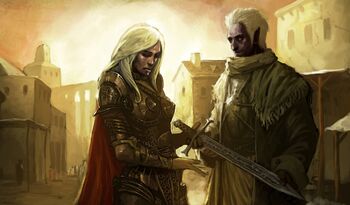 I'm not going too much into Lolth's backstory, but basically, she's the godlike entity that the Drow have built their entire civilization around. They've embraced themselves as cruel children of the darkness, and basically want vengeance against their surface-dwelling cousins. And, of course, they've mutated and been transformed to adapt well in being the superior race in the Underdark. Like the Duergar, they build massive cities in the Underdark's massive caverns, and tend to go to the surface to kidnap slaves for their profane rituals. Also, their culture's changed a fair bit, having a definite spider-theme to them (including the whole Drider and Drageloth sub-races, too) and developing into a far more matriarchal society where the males are second-class citizens. Also, their magic have changed alot to be more evil-themed, and they're very much inclined to use poisons in combat. Since they're a more intelligent race, Drow can basically conceivably have as many sub-types as any other humanoid race out there, but the 5E Monster Manual gives us a couple of 'elite' Drows like the Drow Elite Warrior, the Drow Mage and the always-horrifying Drow Priestess of Lolth. Basically, they're a race of your archetypal evil schemers, sorcerers and dark warriors... of course, with the occasional Drizzt Do'Urden expies that litter every D&D setting as the token good or neutral aligned Drow.
I'm not going too much into Lolth's backstory, but basically, she's the godlike entity that the Drow have built their entire civilization around. They've embraced themselves as cruel children of the darkness, and basically want vengeance against their surface-dwelling cousins. And, of course, they've mutated and been transformed to adapt well in being the superior race in the Underdark. Like the Duergar, they build massive cities in the Underdark's massive caverns, and tend to go to the surface to kidnap slaves for their profane rituals. Also, their culture's changed a fair bit, having a definite spider-theme to them (including the whole Drider and Drageloth sub-races, too) and developing into a far more matriarchal society where the males are second-class citizens. Also, their magic have changed alot to be more evil-themed, and they're very much inclined to use poisons in combat. Since they're a more intelligent race, Drow can basically conceivably have as many sub-types as any other humanoid race out there, but the 5E Monster Manual gives us a couple of 'elite' Drows like the Drow Elite Warrior, the Drow Mage and the always-horrifying Drow Priestess of Lolth. Basically, they're a race of your archetypal evil schemers, sorcerers and dark warriors... of course, with the occasional Drizzt Do'Urden expies that litter every D&D setting as the token good or neutral aligned Drow.
Like other popular races in D&D (dragons, mind flayers, Gith, et cetera) the Drow would get a whole lot of extra material in other sources, but I'm not going to cover them all. Again, I do like that the Monster Manual gives us just enough to basically get the gist of the Drow society as a whole without hammering home too many specifics, levaing those for the aspiring Dungeon Master to fill in themselves. Ultimately, I do love the Drow! Their popularity is honestly well-deserved. And while they might feel a bit 'basic' nowadays, they're still pretty dang cool. I also always thought that it was cool and odd that the Drow as a whole lean more towards neutral evil, but they serve a demon, who lean more towards chaotic evil... although Lolth herself being characterized as a creature of schemes and whatnot does admittedly fit into neutral evil more snugly... I'm pretty sure there's a lot of dissertations and writings out there that dissect this. The Drow are cool!
Empyrean
 As far as I can tell, the Empyrean is a race that's original to the 5th Edition, but are essentially similar enough to the "Titan" race that pops up in the previous editions. Just with a slightly altered origin story to fit with 5E's mythos. 5E's Empyreans are basically the children of gods, being basically marble-skinned, beautiful Greek-statue-esque gods that essentially have the power of demi-gods or lesser gods -- very much inspired by Greco-Roman myths. Unlike Angels, the Empyreans, in a nod to their Greek-god inspirations, are emotional like the mortals, and wear their emotions on their nonexistent sleeves. And when you're the son of the gods of the setting, being emotional means that they will warp the environment around them if they're sad or angry or happy. While generally content to be rarely seen and mostly chaotic good, the Monster Manual also describes evil Empyreans, who are corrupted from a visit to the Lower Planes or being cursed by evil god-like creatures. Also, being kinda god-like, like devils, demons and elementals, their spirits will return to their home plane after death, but the twist is that whether they return to life or just sort of fade away depending on their godly parent. Basically... like the Titans of previous editions, I've always felt that they made for good background dressing or NPC's, but not particularly memorable or creative ones. It's not my personal cup of tea, but I don't mind them existing in the Monster Manual. After all, something I find to be kinda boring might be someone else's favourite monster, yeah?
As far as I can tell, the Empyrean is a race that's original to the 5th Edition, but are essentially similar enough to the "Titan" race that pops up in the previous editions. Just with a slightly altered origin story to fit with 5E's mythos. 5E's Empyreans are basically the children of gods, being basically marble-skinned, beautiful Greek-statue-esque gods that essentially have the power of demi-gods or lesser gods -- very much inspired by Greco-Roman myths. Unlike Angels, the Empyreans, in a nod to their Greek-god inspirations, are emotional like the mortals, and wear their emotions on their nonexistent sleeves. And when you're the son of the gods of the setting, being emotional means that they will warp the environment around them if they're sad or angry or happy. While generally content to be rarely seen and mostly chaotic good, the Monster Manual also describes evil Empyreans, who are corrupted from a visit to the Lower Planes or being cursed by evil god-like creatures. Also, being kinda god-like, like devils, demons and elementals, their spirits will return to their home plane after death, but the twist is that whether they return to life or just sort of fade away depending on their godly parent. Basically... like the Titans of previous editions, I've always felt that they made for good background dressing or NPC's, but not particularly memorable or creative ones. It's not my personal cup of tea, but I don't mind them existing in the Monster Manual. After all, something I find to be kinda boring might be someone else's favourite monster, yeah?
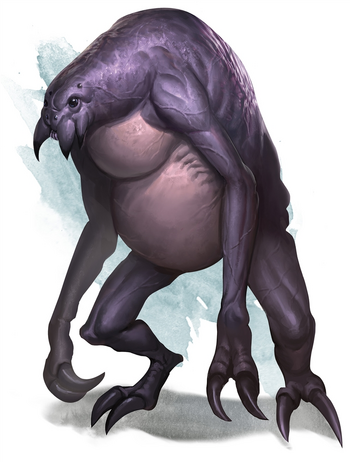
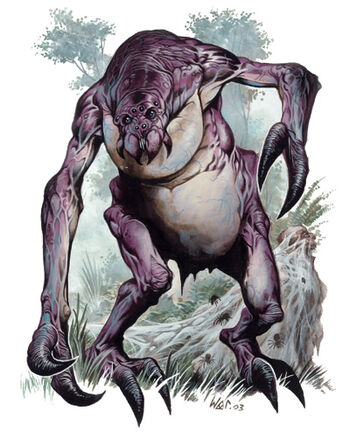
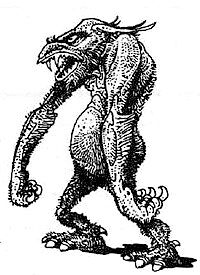
Ettercap
And here's one of the neater monsters out there! As a huge fan of bugs in general, I count bug monsters like the Umber Hulks, the Ankhegs, the Driders and the Thri-kreen among my favourite monsters... but man, how can you not love the Ettercap? The original 1st edition Ettercap was a boring, gangly troll-man that looked generic next to D&D's large amount of random gangly malformed humans, and are pretty unremarkable other than a random footnote describing them as getting along with other spiders. But the 2nd Edition gave it very distinctive bug-eyes and fangs... and then from 3rd Edition onwards, the Ettercaps received a brand-new identity of basically being giant, hulking bug-men. And you'd think I would dislike a far more anthropomorphized version of insectoid monsters, but I do like the Ettercaps! They're basically spider-people that's not quite spiders, and I do really love the image of these fat, hunchbacked purple-skinned people... that happen to have spider eyes and mandibles, as well as massive spider-like talons at the end of their arms and legs. The 4th Edition briefly reinvented the Ettercaps as just a chitinous giant bug-monster-man, sort of like a more sentient Ankheg... but thankfully, 5th Edition went back to the more unique-looking fat spider-man more akin to the 3rd Edition depiction.
They're basically like humanoid spiders, although they're more spiders with human features, and I do really like just how wacky they are. They have spider faces, they can weave webs, and, hell, apparently they herd and keep giant flocks of spiders like shepherds, but they also look like fat pudgy men. Other than that they sort of behave what you'd expect from a spider monster. They lay web traps, they can climb on walls, they hide in caves, they have poisonous bites.. and depending on the edition, their backstory differ from being the descendants of corrupted druids, or that they're destructive anti-fey creatures. Whatever the case, though, I do really love the idea of these bug-men that choose a couple of iconic features from a bug and emphasizes them. It really does set the Ettercaps apart, y'know?
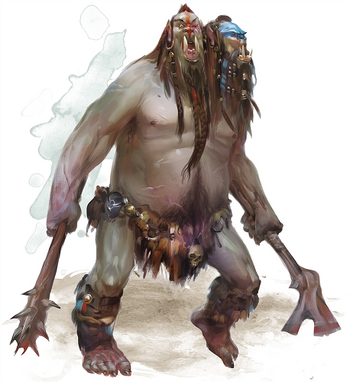
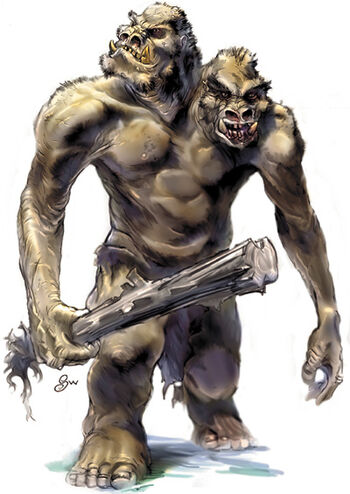
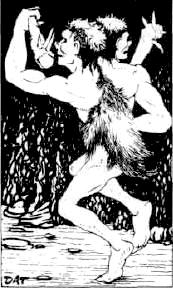
Ettin
Borrowing its name from an old-English word for giant (specifically, a corruption of the Nordic Jotunn, or 'frost giant'), the Ettins are unique giant variant because they've got two heads. Hey, anything with two heads will always be funny because they argue with themselves, right? And that's basically what these guys are all about. That's all they basically are. Giants with two heads. And that's pretty neat? I've never found these guys particularly compelling, but these creatures to tend to give your DM's a chance to make wacky conflicting personalities. Hell, the entire two-headed ogre race in the Warcraft franchise is basically based on the Ettins, aren't they? Right up to each head having a separate name that's combined to refer to the full ettin. And those are fun. Basically, each Ettin is born with two personalities trapped in a single body, and they're so sick of their 'twin' that they have mostly contempt at each other and they constantly argue with each other. Ettins basically really hate each other and live solitary lives (unless hired by other brutish tribes), and the 5E Monster Manual give the two-headed baboon demon prince Demogorgon as the possible reason for the creation of this race. I'm mostly surprised that the Ettin isn't specifically based on a specific two-headed giant from Greek or old English mythology, actually. Not a creature I'm particularly fond of, although one that I'll readily recognize as one of the most 'classic' monsters from D&D.
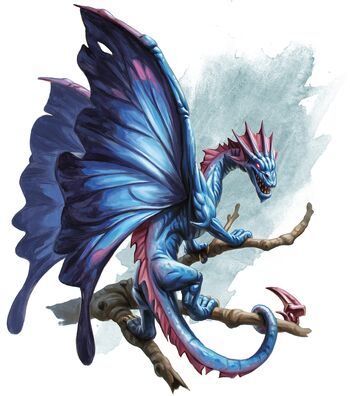
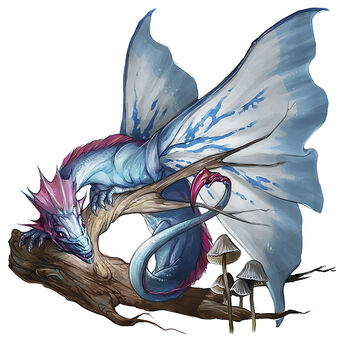
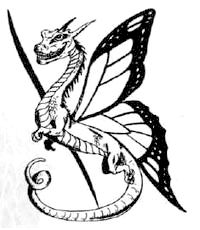
Faerie Dragon
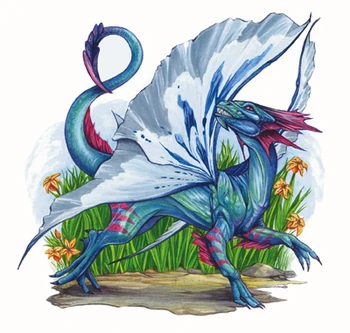 Another one that the Warcraft franchise got a lot of mileage out of is the Faerie Dragon. Combining the mysterious fair folk of the Feywild with the marquee monsters of the franchise, the faerie dragon are actually pretty tiny, being described in most editions as being around the size of a cat. They're cute little colourful tiny dragons with little fairy wings, basically the equivalent to dragons that tiny Tinkerbell-esque fairies are to humans. Like dragons, they're intelligent, and like fairies, they're mischievous and love to trick people. It's basically a wacky, playful creature that likes to stalk people who wander into their corner of the forest while shrouded in invisibility and giggling and pranking their new 'friends'. They're able to phase in and out of reality as they 'flit' into their Feywilds dimension, while also having access to magic and a breath that gives you euphoria. Like most dragons, they can be bribed with treasure... although you don't have to go too far to appeasing a faerie dragon. Sweets and baked goods will do! The 5E version gives us a list of the age-range of faerie dragons, since they stay the same size, and they basically go down the ROYGBIV spectrum from red to violet as they grow older.
Another one that the Warcraft franchise got a lot of mileage out of is the Faerie Dragon. Combining the mysterious fair folk of the Feywild with the marquee monsters of the franchise, the faerie dragon are actually pretty tiny, being described in most editions as being around the size of a cat. They're cute little colourful tiny dragons with little fairy wings, basically the equivalent to dragons that tiny Tinkerbell-esque fairies are to humans. Like dragons, they're intelligent, and like fairies, they're mischievous and love to trick people. It's basically a wacky, playful creature that likes to stalk people who wander into their corner of the forest while shrouded in invisibility and giggling and pranking their new 'friends'. They're able to phase in and out of reality as they 'flit' into their Feywilds dimension, while also having access to magic and a breath that gives you euphoria. Like most dragons, they can be bribed with treasure... although you don't have to go too far to appeasing a faerie dragon. Sweets and baked goods will do! The 5E version gives us a list of the age-range of faerie dragons, since they stay the same size, and they basically go down the ROYGBIV spectrum from red to violet as they grow older.
Thanks to the very popular portrayal of Faerie Dragon inspired characters like Warcraft's Brightwing and Dota 2's Puck, my D&D group has basically characterized the entire race of faerie dragons as having such an odd concept of morality that the race ends up coming off as sort of innocent psychopaths, who are just not quite sure why their idea of 'play' is so feared and despised by humans. And, again, that's the beauty of D&D. You can pick and choose from any number of fantasy settings that's been inspired by D&D and draw from them to make the originals a bit richer.
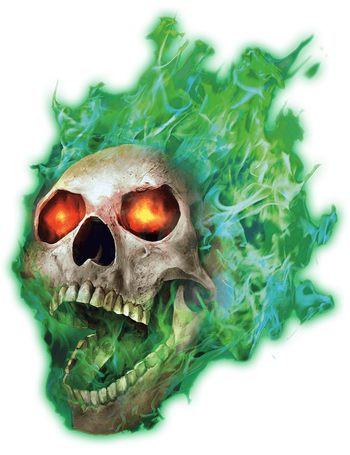
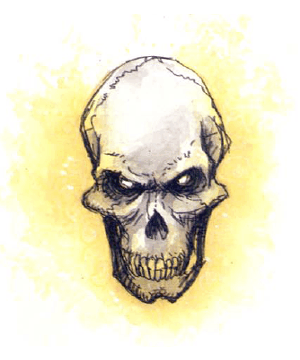
Flameskull
I would've sworn that this dude's brand-new in 5th Edition, but apparently they've been around in every single edition since 2nd Edition. And I just never noticed them... I guess Demiliches are just far cooler floating skulls than these, I guess? The Flameskull is basically a crazy, cackling glowing-eyed skull with a mane of Ghost Rider esque flames around its head, created from the remains of dead wizards -- they have the magical skills but scant little of the memory or personalities of their past life. Burning skulls and floating sentient skulls are both pretty popular evil monster tropes, so combining the two is kinda obvious, yeah? I just don't find them particularly memorable, but it's not their fault -- they're pretty serviceable low-level undead that isn't just another skeleton or zombie, but rather more similar to something like a created golem. It's going to do its best to fulfill the purpose it's created to, and will reform unless you do something specific (dispel magic, holy water or remove curse) to properly sanctify the remains. Honestly, despite its relative simplicity in the world of undead monsters, it's pretty cool.
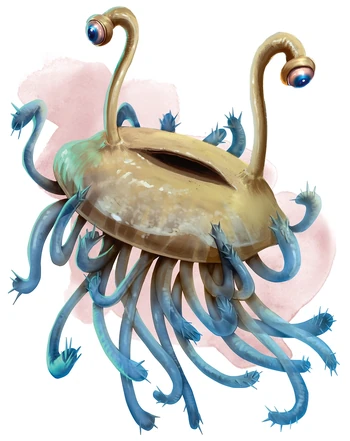
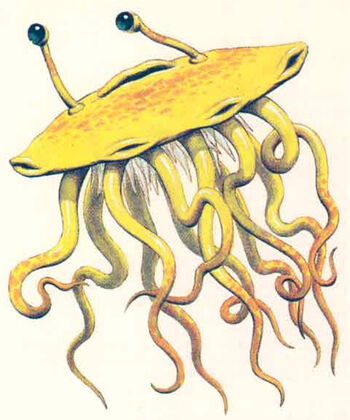
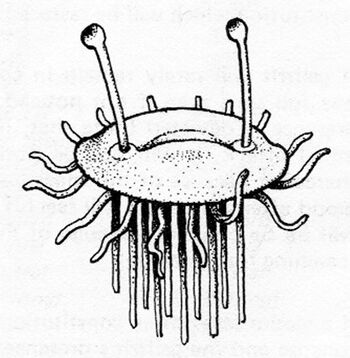
Flumph
Ah, the Flumph. This is going to be the final monster we're covering today, because I really wanted to end at the Flumph. Originally released as part of the "Fiend Folio", the Flumph was the go-to monster for people who want to mock at the old D&D's penchant for making really, really weird, goofy-ass monsters that try to be original and end up just being kinda weird, y'know? It is also notorious as being the only 'good' aligned monster in a book filled with a lot of D&D's most famous evil monsters. And the Flumph is... a cartoon jellyfish with the most goofy-looking art, two slug-like eyestalks and it flies around with what is essentially farts. It's also one of the monsters that are just lawful good. And... and people mocked the Flumphs relentlessly for years, mocking them as one of the worst concepts to come out of D&D, as a completely useless monster (because all monsters are good for as for boss fights and EXP vending machines), and... that's kinda undeserved and mean. Just because a creature exists just to make the world a slightly richer place, doesn't mean they're useless, y'know?
And the Flumph remained in infamous obscurity, until various projects end up looking at the Flumphs and go, "come on, don't be mean. Flumphs are neat." And they are! Between the highly-awesome Order of the Stick comic, or Pathfinder using Flumphs as one of the star monsters in their Misfit Monsters Redeemed book, the Flumphs ended up experiencing a surge of popularity. Whether it was people who loved the dumb fart-sphagettis ironically or sarcastically, or it's people like me who discovered the Flumph's existence through jokes, the Flumph itself ended up being so popular that Wizards of the Coast ended up basically taking this classic creature and putting it straight in the 5th Edition core sourcebook. The Flumph only showed up in obscure official magazines and what amounted as footnotes, basically non-existent (and just look at that gross artwork for 3E Flumph), I definitely love the fact that they've unironically commissioned the goofiest-ass adorable artwork for the Flumph ever. Huzzah for the Flumphs! As the geek community became far more accepted into the mainstream, and people are getting more comfortable in realizing that D&D doesn't have to be super-serious grim-dark stuff all the time, apparently it's enough for the Wizards team to decide that critters like the Flumphs and Modrons deserve to be in the same spotlight as things like Gibbering Mouthers and Aboleths. Because, hey, as much as we do love slaying our dragons and liches and xorns and glabrezus, the world of D&D also has a place for a race of subterranean helpful floating jellyfishes or trickster fairy-dragons and other wacky things, y'know?
Like, not all monsters needed to be cool dragons or hideous abominations from beyond or transplants from an existing mythology or a monstrous magical version of a real-life animal. Sometimes you just have goofy-ass monsters like the Flumph. They're considered 'aberrations', but unlike most other aberrations and creatures not from this world, the Flumphs are genuinely benevolent. They're not particularly strong, mostly attacking with their acid-tipped tentacles and a stench gas-spray, and the Monster Manual even has rules for the silliness inherent in having a Flumph be incapacitated by being upside-down... but, y'know, that's part of their charm. They're a race of colour-changing jellyfishes that are actually very intelligent and wise despite their appearance, sensitive to other races' emotional states and being pretty damn willing to help out anyone in their path. Their biology doesn't make sense because they're aberrations, but while they feed on psionic energies, they're basically like passive parasites that draw just enough to feed them, unlike the much more brutal Intellect Devourers or Mind Flayers. They're happy to aid adventurers and giving them important information about the evil races that they live nearby, willingly assisting in crushing the vile creatures even if it does mean that they have to seek nourishment elsewhere.
These things are dumb, but dumb in a good way. They're goofy, they look goofy, and they behave in a goofy manner... but honestly, they add such a fun, whimsical layer to all of these super-serious gritty monsters. I, for one, really love the silliness of these fart-pancake jellyfishes. And I really do love the subversion at taking such a bizarrely unnatural-looking beast and making is just, y'know, good. Too often in fiction, every single monster that doesn't confirm to what we view as 'natural' ends up being typecast as being incomprehensible horrors from beyond. Honestly, I do enjoy just how much 5th Edition has dialed back on trying to make everything super-serious and badass (like the Ettercap or the Dryad, both of which are on this page), and that does mean bringing back some old wackos like the Flumph!
(Also, insert your own Flying Spaghetti Monster joke here).
Anyway, on that fun note at one of D&D's most reviled monsters, now acknowledged as one of its most charming ones, it's a happy ending for good ol' Flumphy.
5E stats in the Monster Manual for the creatures we covered here:
You are now reading the article Reviewing D&D Monsters - 5E Monster Manual, Dryads to Flumphs with link address https://kanakoroku.blogspot.com/2019/10/reviewing-d-monsters-5e-monster-manual_18.html
Title : Reviewing D&D Monsters - 5E Monster Manual, Dryads to Flumphs
link : Reviewing D&D Monsters - 5E Monster Manual, Dryads to Flumphs
Reviewing D&D Monsters - 5E Monster Manual, Dryads to Flumphs
I'm going to try to go through these things faster, and try and be a lot more succinct in descriptions. Re-reading my pieces for devils, demons and dragons, I feel like I kind of went on a bit too much in actually trying to talk about every single detail given in the Monster Manual. I'll try to be a bit more concise and be less about describing how the creatures actually function in-game, and more about actually, y'know, reviewing how I feel about these creatures as a whole.Click here for the previous part, covering Dragons to Driders.
Click here for the next part, covering Fomorians to Gnolls.
Click here for the index.



Dryad
Another monster taken from Greek mythology is the dryad, who are fairies that take the form of feminine figures that dart in and out of trees, and are completely neutral, not evil, but not technically 'good' in the way we silly humanoids understand it. According to 5E lore, though, dryads are apparently specifically fey that are cursed and bound to a single tree for punishment because they fell in love with mortals. The dryad is thus bound to the tree, able to move in and out of the tree freely and tend to the forest around her (they can teleport to other trees, but they're still bound to a specific one). It's really interesting, because the dryad's fate, youth and sanity are all bound to a tree, which is a neat little gimmick. They're not exactly harmful, they just are really inquisitive and curious. It's just that being a fey lady, dryads tend to not understand human culture and sometimes do things like, well, abduct and/or magically charm people away. And they'll straight-up be hostile against people that attack their patch of forest. Depending on the edition, when you cut a dryad's special tree, they'll instantly die or be driven insane.
While throughout other D&D editions dryads have been fairy ladies with a plant theme, 4th Edition reinvents the Dryad as this horrifying, large humanoid tree monster with no mouth, a body made out of wood, and bramble-hair. Which is pretty impressive artwork (my D&D group uses the 4E Dryad as a substitute for stronger Blight variants), but not every single monster needed to look creepy and non-conventionally-humanoid, y'know? Never been the biggest fan of nature spirits and whatnot, but there's a place in D&D worlds for both happy, inquisitive forest spirits like the classic dryad, as well as the myriad other murderous nature spirits that exist in the D&D world. I like these.



Duergar
These guys are basically evil dwarves, living in the Underdark, the subterranean network of dark caves deep underneath the earth, and they're kind of assholes! They're what the Dark Iron Dwarves in Warcraft are based off of, and they're basically gray-skinned dwarves that are lawful evil, warlike, and wanting to expand and conquer as many areas as they can. Later editions codified their backstory, telling us that they used to be regular old dwarves who dug too deep, and ended up being captured by the Mind Flayers (more on those later!) and basically became slaves for generations until they won their victory and rebelled against their captors with the aid of the evil, xenophobic god Laduguer (which may or may not be a devil in disguise). Both the god's influence and their slavery has basically changed the race, not just visually, but also caused them all to become evil, untrusting and dour. They're basically depressed, constantly-warring dwarves, and are particularly fond of enslaving other races. Physically, in addition to their visual changes, they're also resistant to the tricks Mind Flayers can use, as well as having an innate ability to enlarge their bodies temporarily or to turn invisible at will, which are apparently caused by their imprisonment.
Taken as a simple "evil dwarf" race, they're... they're honestly pretty simple. A neat backstory, a couple of extra visual cues... they're all right enemy concepts, though. It's not like the dwarves are super-duper interesting in the first place, and depending on your GM's ability and your campaign's storyline, a society of evil dwarves might actually be pretty neat-o set of enemies.
ELEMENTALS:
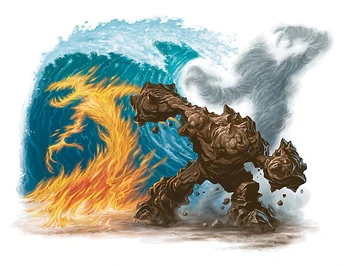 |
| 4E basic elementals |
One of D&D's biggest contributions to fantasy video-gaming is perhaps the Elementals. While dragons, demons and Greek-inspired monsters all draw from traditional myths to some degree, the Elementals were a bit more... original. And the concept really is simple. You fight living fire. And living water. And living rock. And living wind. But the fact that these are tied to the cosmology of the setting (which depends on the edition, but still) and the fact that these are quite literally the embodiment of the actual building blocks of the universe is certainly pretty cool. They've since shown up in so many other video games and fantasy settings, tending to use the simple "hunched over man made up of a given element". They function somewhat similarly to other extra-planar creatures like dragons and demons and fey, but are far, far more primal, not really being super-sentient, and are as primal as the elements they represent. There are a bunch of other 'greater' elemental beings that have evil evil plans, but most regular elementals are basically just unfocused neutral monsters.
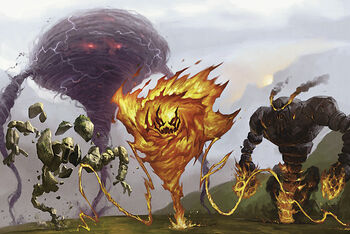 |
| Multi-element Elementals (4E) |
Elementals are also often brought into the mortal plane with magical items or spells, but the elementals just instinctively refuse to do so. In other editions, we also have para-elementals, quasi-elementals, fused elementals, and whatnot, since the mythology and cosmology of the worlds change all the time... but for the most part, the four basic elementals are, as Avatar: The Last Airbender has taught us: fire, water, earth and air. Not going to say that much here, they're pretty neat, basic monsters, and while there are a lot of lore behind them, I do appreciate the relative simplicity of these things.


Air Elemental
Look at that hilarious 1st edition air elemental, which literally is just a tornado with googly eyes! 5E's Air Elemental is more like a wispy ghost made out of steam and smoke, and while air elementals tended to look the least impressive compared to water, earth and especially fire... man, fighting against what's literally a living, angry tornado isn't anything to joke about! It's able to fly, which is its biggest advantage, in addition to being made up of air, which means they can go basically wherever they want to.



Earth Elemental
Earth elementals are, well, giant rock-people. I'm not the biggest fan of D&D's earth elementals, which tend to sort of blur the lines with things like golems and whatnot, just being huge rock-men. I dunno -- I guess I just really like Warcraft's Earth Elemental design too much? They're pretty neat, and are perhaps the most simple of the elementals. They're giant rock-things that smash you with their rock arms. But then their ability to basically 'melt' into the ground and basically effortlessly glide through the earth itself ends up being an ability that these creatures happily abuse to gain an advantage in battle.


Fire Elemental
Hahaha, the original Fire Elemental was literally just a wildfire with two little candle-flame eyes! All subsequent depictions have basically gone for the burning-tornado-of-flames with a face and two arms look, although 4th Edition swapped out the face for a massive venus flytrap mouth. Fire's probably the most primal and scary of the elementals, because... well, partly because of Avatar, but partly because as living creatures we're just sort of predisposed to be afraid of fire.



Water Elemental
God, the 1st edition elementals look goofy as hell, look at that thing! It's just a wave with eyes and adorable little punching-boxing nubs for hands. Admittedly, I'm way too used over multiple years of playing Warcraft that the Water Elemental in my head looks like this, but really, it makes a lot more sense for a creature that embodies the element of water to be a whirling mass of waves, yeah? The 5E Water Elemental is a bit more wraith-like of sorts, with a moaning mouth and less prominent arms. The Water Elemental is another tricky creature to fight, with its modus operandi smothering and drowning people.




 Drow
DrowThe iconic 'evil but humanoid' race from Dungeons & Dragons are the Drow, otherwise known as "Dark Elves", which is every D&D player's go-to race for dark-and-misunderstood sexy-and-attractive player characters prior to the introduction of the Tieflings. The Tieflings actually tend to be misunderstood, and the whole race and culture lean more towards good and neutral, whereas the Drow are supposed to be mainly evil with the heroic ones being more of an exception. Of course, everyone loved playing the dark, brooding loner that's an angsty renegade from their evil race trying to prove that Drow, too, can be cool pretty heroes. Don't deny it, you've probably played a Drow at some point if you've played D&D long enough. And honestly, once you take away the stigma of everyone playing angsty emo anime-character-transplant Drow characters (which, by the way, is nothing to be ashamed of -- play whatever character you want!), the Drow themselves are pretty cool for a reason.
They're elves with obsidian skin, who live in the Underdark network of underground caverns, and they were the losers during an ancient war between the good elves and the evil ones. And being banished and forced to live underground hasn't made their disposition any better. And actually being a race that worship the demon spider-goddess Lolth and different Drow cities being tied up in a whole ton of cutthroat evil politics doesn't make them any nicer either. Drow society revolve around a whole ton of noble houses vying for power and Lolth's favour, and if you think that this sounds a bit like the Dunmer from Elder Scrolls III: Morrowind, well, where did you think the archetype of Dark Elves come from? And... there are a lot of discussion about some unfortunate connotations, but honestly I've always seen that particularly in newer material, the Drow have basically taken a whole unique life of their own as a huge part of tabletop gaming culture. That's not to say that aspiring GM's shouldn't watch out when they write for Drow because it's a bit too easy to fall into some accidental insensitivity.
 I'm not going too much into Lolth's backstory, but basically, she's the godlike entity that the Drow have built their entire civilization around. They've embraced themselves as cruel children of the darkness, and basically want vengeance against their surface-dwelling cousins. And, of course, they've mutated and been transformed to adapt well in being the superior race in the Underdark. Like the Duergar, they build massive cities in the Underdark's massive caverns, and tend to go to the surface to kidnap slaves for their profane rituals. Also, their culture's changed a fair bit, having a definite spider-theme to them (including the whole Drider and Drageloth sub-races, too) and developing into a far more matriarchal society where the males are second-class citizens. Also, their magic have changed alot to be more evil-themed, and they're very much inclined to use poisons in combat. Since they're a more intelligent race, Drow can basically conceivably have as many sub-types as any other humanoid race out there, but the 5E Monster Manual gives us a couple of 'elite' Drows like the Drow Elite Warrior, the Drow Mage and the always-horrifying Drow Priestess of Lolth. Basically, they're a race of your archetypal evil schemers, sorcerers and dark warriors... of course, with the occasional Drizzt Do'Urden expies that litter every D&D setting as the token good or neutral aligned Drow.
I'm not going too much into Lolth's backstory, but basically, she's the godlike entity that the Drow have built their entire civilization around. They've embraced themselves as cruel children of the darkness, and basically want vengeance against their surface-dwelling cousins. And, of course, they've mutated and been transformed to adapt well in being the superior race in the Underdark. Like the Duergar, they build massive cities in the Underdark's massive caverns, and tend to go to the surface to kidnap slaves for their profane rituals. Also, their culture's changed a fair bit, having a definite spider-theme to them (including the whole Drider and Drageloth sub-races, too) and developing into a far more matriarchal society where the males are second-class citizens. Also, their magic have changed alot to be more evil-themed, and they're very much inclined to use poisons in combat. Since they're a more intelligent race, Drow can basically conceivably have as many sub-types as any other humanoid race out there, but the 5E Monster Manual gives us a couple of 'elite' Drows like the Drow Elite Warrior, the Drow Mage and the always-horrifying Drow Priestess of Lolth. Basically, they're a race of your archetypal evil schemers, sorcerers and dark warriors... of course, with the occasional Drizzt Do'Urden expies that litter every D&D setting as the token good or neutral aligned Drow.Like other popular races in D&D (dragons, mind flayers, Gith, et cetera) the Drow would get a whole lot of extra material in other sources, but I'm not going to cover them all. Again, I do like that the Monster Manual gives us just enough to basically get the gist of the Drow society as a whole without hammering home too many specifics, levaing those for the aspiring Dungeon Master to fill in themselves. Ultimately, I do love the Drow! Their popularity is honestly well-deserved. And while they might feel a bit 'basic' nowadays, they're still pretty dang cool. I also always thought that it was cool and odd that the Drow as a whole lean more towards neutral evil, but they serve a demon, who lean more towards chaotic evil... although Lolth herself being characterized as a creature of schemes and whatnot does admittedly fit into neutral evil more snugly... I'm pretty sure there's a lot of dissertations and writings out there that dissect this. The Drow are cool!
Empyrean
 As far as I can tell, the Empyrean is a race that's original to the 5th Edition, but are essentially similar enough to the "Titan" race that pops up in the previous editions. Just with a slightly altered origin story to fit with 5E's mythos. 5E's Empyreans are basically the children of gods, being basically marble-skinned, beautiful Greek-statue-esque gods that essentially have the power of demi-gods or lesser gods -- very much inspired by Greco-Roman myths. Unlike Angels, the Empyreans, in a nod to their Greek-god inspirations, are emotional like the mortals, and wear their emotions on their nonexistent sleeves. And when you're the son of the gods of the setting, being emotional means that they will warp the environment around them if they're sad or angry or happy. While generally content to be rarely seen and mostly chaotic good, the Monster Manual also describes evil Empyreans, who are corrupted from a visit to the Lower Planes or being cursed by evil god-like creatures. Also, being kinda god-like, like devils, demons and elementals, their spirits will return to their home plane after death, but the twist is that whether they return to life or just sort of fade away depending on their godly parent. Basically... like the Titans of previous editions, I've always felt that they made for good background dressing or NPC's, but not particularly memorable or creative ones. It's not my personal cup of tea, but I don't mind them existing in the Monster Manual. After all, something I find to be kinda boring might be someone else's favourite monster, yeah?
As far as I can tell, the Empyrean is a race that's original to the 5th Edition, but are essentially similar enough to the "Titan" race that pops up in the previous editions. Just with a slightly altered origin story to fit with 5E's mythos. 5E's Empyreans are basically the children of gods, being basically marble-skinned, beautiful Greek-statue-esque gods that essentially have the power of demi-gods or lesser gods -- very much inspired by Greco-Roman myths. Unlike Angels, the Empyreans, in a nod to their Greek-god inspirations, are emotional like the mortals, and wear their emotions on their nonexistent sleeves. And when you're the son of the gods of the setting, being emotional means that they will warp the environment around them if they're sad or angry or happy. While generally content to be rarely seen and mostly chaotic good, the Monster Manual also describes evil Empyreans, who are corrupted from a visit to the Lower Planes or being cursed by evil god-like creatures. Also, being kinda god-like, like devils, demons and elementals, their spirits will return to their home plane after death, but the twist is that whether they return to life or just sort of fade away depending on their godly parent. Basically... like the Titans of previous editions, I've always felt that they made for good background dressing or NPC's, but not particularly memorable or creative ones. It's not my personal cup of tea, but I don't mind them existing in the Monster Manual. After all, something I find to be kinda boring might be someone else's favourite monster, yeah?


Ettercap
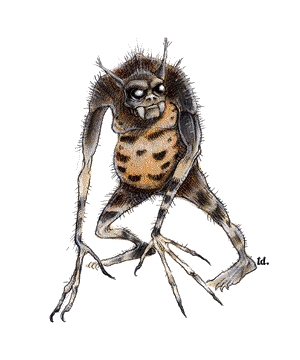 |
| Ettercap (2E) |
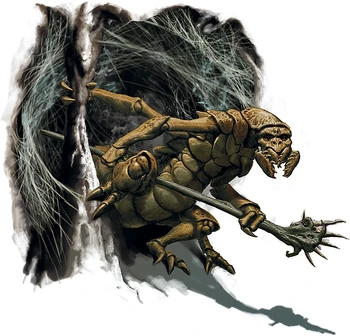 |
| Ettercap (4E) |
They're basically like humanoid spiders, although they're more spiders with human features, and I do really like just how wacky they are. They have spider faces, they can weave webs, and, hell, apparently they herd and keep giant flocks of spiders like shepherds, but they also look like fat pudgy men. Other than that they sort of behave what you'd expect from a spider monster. They lay web traps, they can climb on walls, they hide in caves, they have poisonous bites.. and depending on the edition, their backstory differ from being the descendants of corrupted druids, or that they're destructive anti-fey creatures. Whatever the case, though, I do really love the idea of these bug-men that choose a couple of iconic features from a bug and emphasizes them. It really does set the Ettercaps apart, y'know?



Ettin
Borrowing its name from an old-English word for giant (specifically, a corruption of the Nordic Jotunn, or 'frost giant'), the Ettins are unique giant variant because they've got two heads. Hey, anything with two heads will always be funny because they argue with themselves, right? And that's basically what these guys are all about. That's all they basically are. Giants with two heads. And that's pretty neat? I've never found these guys particularly compelling, but these creatures to tend to give your DM's a chance to make wacky conflicting personalities. Hell, the entire two-headed ogre race in the Warcraft franchise is basically based on the Ettins, aren't they? Right up to each head having a separate name that's combined to refer to the full ettin. And those are fun. Basically, each Ettin is born with two personalities trapped in a single body, and they're so sick of their 'twin' that they have mostly contempt at each other and they constantly argue with each other. Ettins basically really hate each other and live solitary lives (unless hired by other brutish tribes), and the 5E Monster Manual give the two-headed baboon demon prince Demogorgon as the possible reason for the creation of this race. I'm mostly surprised that the Ettin isn't specifically based on a specific two-headed giant from Greek or old English mythology, actually. Not a creature I'm particularly fond of, although one that I'll readily recognize as one of the most 'classic' monsters from D&D.



Faerie Dragon
 Another one that the Warcraft franchise got a lot of mileage out of is the Faerie Dragon. Combining the mysterious fair folk of the Feywild with the marquee monsters of the franchise, the faerie dragon are actually pretty tiny, being described in most editions as being around the size of a cat. They're cute little colourful tiny dragons with little fairy wings, basically the equivalent to dragons that tiny Tinkerbell-esque fairies are to humans. Like dragons, they're intelligent, and like fairies, they're mischievous and love to trick people. It's basically a wacky, playful creature that likes to stalk people who wander into their corner of the forest while shrouded in invisibility and giggling and pranking their new 'friends'. They're able to phase in and out of reality as they 'flit' into their Feywilds dimension, while also having access to magic and a breath that gives you euphoria. Like most dragons, they can be bribed with treasure... although you don't have to go too far to appeasing a faerie dragon. Sweets and baked goods will do! The 5E version gives us a list of the age-range of faerie dragons, since they stay the same size, and they basically go down the ROYGBIV spectrum from red to violet as they grow older.
Another one that the Warcraft franchise got a lot of mileage out of is the Faerie Dragon. Combining the mysterious fair folk of the Feywild with the marquee monsters of the franchise, the faerie dragon are actually pretty tiny, being described in most editions as being around the size of a cat. They're cute little colourful tiny dragons with little fairy wings, basically the equivalent to dragons that tiny Tinkerbell-esque fairies are to humans. Like dragons, they're intelligent, and like fairies, they're mischievous and love to trick people. It's basically a wacky, playful creature that likes to stalk people who wander into their corner of the forest while shrouded in invisibility and giggling and pranking their new 'friends'. They're able to phase in and out of reality as they 'flit' into their Feywilds dimension, while also having access to magic and a breath that gives you euphoria. Like most dragons, they can be bribed with treasure... although you don't have to go too far to appeasing a faerie dragon. Sweets and baked goods will do! The 5E version gives us a list of the age-range of faerie dragons, since they stay the same size, and they basically go down the ROYGBIV spectrum from red to violet as they grow older.Thanks to the very popular portrayal of Faerie Dragon inspired characters like Warcraft's Brightwing and Dota 2's Puck, my D&D group has basically characterized the entire race of faerie dragons as having such an odd concept of morality that the race ends up coming off as sort of innocent psychopaths, who are just not quite sure why their idea of 'play' is so feared and despised by humans. And, again, that's the beauty of D&D. You can pick and choose from any number of fantasy settings that's been inspired by D&D and draw from them to make the originals a bit richer.


Flameskull
I would've sworn that this dude's brand-new in 5th Edition, but apparently they've been around in every single edition since 2nd Edition. And I just never noticed them... I guess Demiliches are just far cooler floating skulls than these, I guess? The Flameskull is basically a crazy, cackling glowing-eyed skull with a mane of Ghost Rider esque flames around its head, created from the remains of dead wizards -- they have the magical skills but scant little of the memory or personalities of their past life. Burning skulls and floating sentient skulls are both pretty popular evil monster tropes, so combining the two is kinda obvious, yeah? I just don't find them particularly memorable, but it's not their fault -- they're pretty serviceable low-level undead that isn't just another skeleton or zombie, but rather more similar to something like a created golem. It's going to do its best to fulfill the purpose it's created to, and will reform unless you do something specific (dispel magic, holy water or remove curse) to properly sanctify the remains. Honestly, despite its relative simplicity in the world of undead monsters, it's pretty cool.



Flumph
 |
| Pathfinder |
And the Flumph remained in infamous obscurity, until various projects end up looking at the Flumphs and go, "come on, don't be mean. Flumphs are neat." And they are! Between the highly-awesome Order of the Stick comic, or Pathfinder using Flumphs as one of the star monsters in their Misfit Monsters Redeemed book, the Flumphs ended up experiencing a surge of popularity. Whether it was people who loved the dumb fart-sphagettis ironically or sarcastically, or it's people like me who discovered the Flumph's existence through jokes, the Flumph itself ended up being so popular that Wizards of the Coast ended up basically taking this classic creature and putting it straight in the 5th Edition core sourcebook. The Flumph only showed up in obscure official magazines and what amounted as footnotes, basically non-existent (and just look at that gross artwork for 3E Flumph), I definitely love the fact that they've unironically commissioned the goofiest-ass adorable artwork for the Flumph ever. Huzzah for the Flumphs! As the geek community became far more accepted into the mainstream, and people are getting more comfortable in realizing that D&D doesn't have to be super-serious grim-dark stuff all the time, apparently it's enough for the Wizards team to decide that critters like the Flumphs and Modrons deserve to be in the same spotlight as things like Gibbering Mouthers and Aboleths. Because, hey, as much as we do love slaying our dragons and liches and xorns and glabrezus, the world of D&D also has a place for a race of subterranean helpful floating jellyfishes or trickster fairy-dragons and other wacky things, y'know?
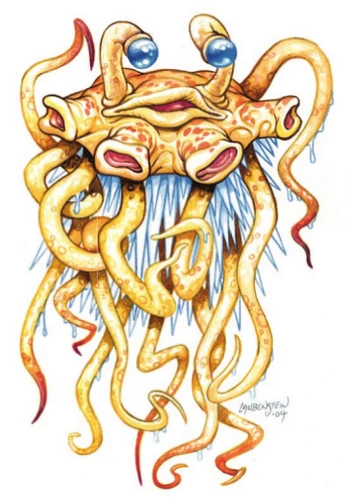 |
| 3rd Edition |
These things are dumb, but dumb in a good way. They're goofy, they look goofy, and they behave in a goofy manner... but honestly, they add such a fun, whimsical layer to all of these super-serious gritty monsters. I, for one, really love the silliness of these fart-pancake jellyfishes. And I really do love the subversion at taking such a bizarrely unnatural-looking beast and making is just, y'know, good. Too often in fiction, every single monster that doesn't confirm to what we view as 'natural' ends up being typecast as being incomprehensible horrors from beyond. Honestly, I do enjoy just how much 5th Edition has dialed back on trying to make everything super-serious and badass (like the Ettercap or the Dryad, both of which are on this page), and that does mean bringing back some old wackos like the Flumph!
(Also, insert your own Flying Spaghetti Monster joke here).
Anyway, on that fun note at one of D&D's most reviled monsters, now acknowledged as one of its most charming ones, it's a happy ending for good ol' Flumphy.
5E stats in the Monster Manual for the creatures we covered here:
- Dryad: Medium fey; neutral; CR 1
- Duergar: Medium humanoid - dwarf; lawful evil; CR 1
- Air Elemental: Large elemental; neutral; CR 5
- Earth Elemental: Large elemental; neutral; CR 5
- Fire Elemental: Large elemental; neutral; CR 5
- Water Elemental: Large elemental; neutral; CR 5
- Drow: Medium humanoid - elf; neutral evil; CR 1/4
- Drow Elite Warrior: Medium humanoid - elf; neutral evil; CR 5
- Drow Mage: Medium humanoid - elf; neutral evil; CR 7
- Drow Priestess of Lolth: Medium humanoid - elf; neutral evil; CR 8
- Empyrean: Huge celestial - titan; chaotic good 75%/neutral evil 25%; CR 23
- Ettercap: Medium monstrosity; neutral evil; CR 2
- Ettin: Large giant; chaotic evil; CR 4
- Faerie Dragon: Tiny dragon; chaotic good; CR 1-2 depending on age
- Flameskull: Tiny undead; neutral evil; CR 4
- Flumph: Small aberration; lawful good; CR 1/8
That's the article Reviewing D&D Monsters - 5E Monster Manual, Dryads to Flumphs
That's it for the article Reviewing D&D Monsters - 5E Monster Manual, Dryads to Flumphs this time, hopefully can be useful for all of you. okay, see you in another article post.
You are now reading the article Reviewing D&D Monsters - 5E Monster Manual, Dryads to Flumphs with link address https://kanakoroku.blogspot.com/2019/10/reviewing-d-monsters-5e-monster-manual_18.html
